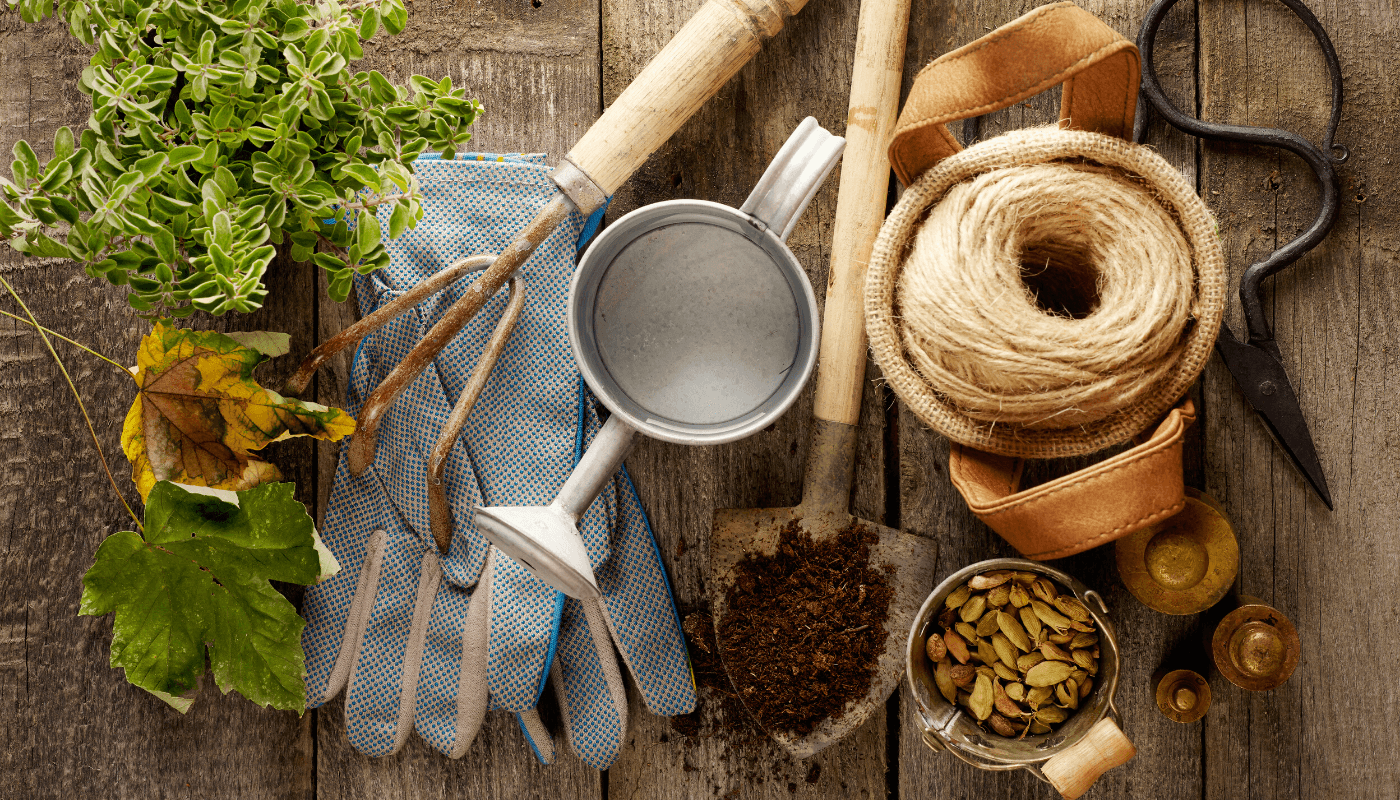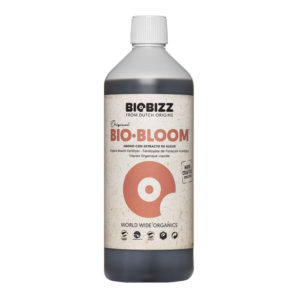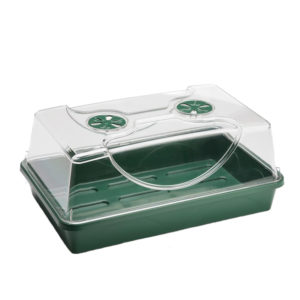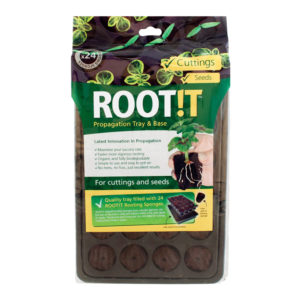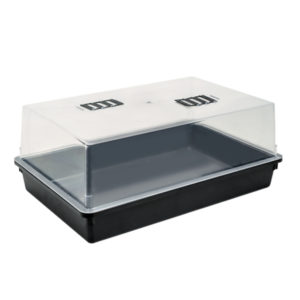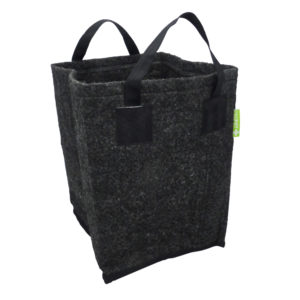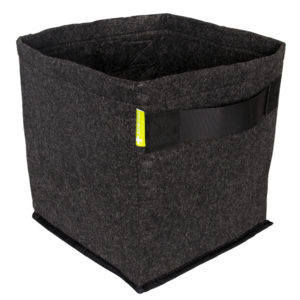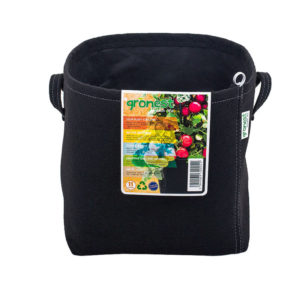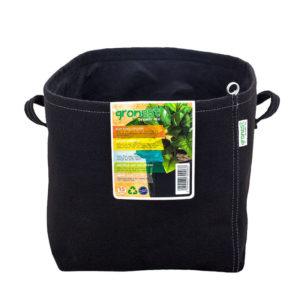Spring is a beautiful time in the garden. As plants begin to wake up, there are many gardening jobs for April. Read below to find out what you can sow, prune, treat or simply marvel at in your garden this month.
What plants are in season in April?
In April, some flowers, shrubs, and trees grace us with their beautiful flowers and sweet scent. Here are some of the most popular varieties that bloom at this time of the year.
Flowers
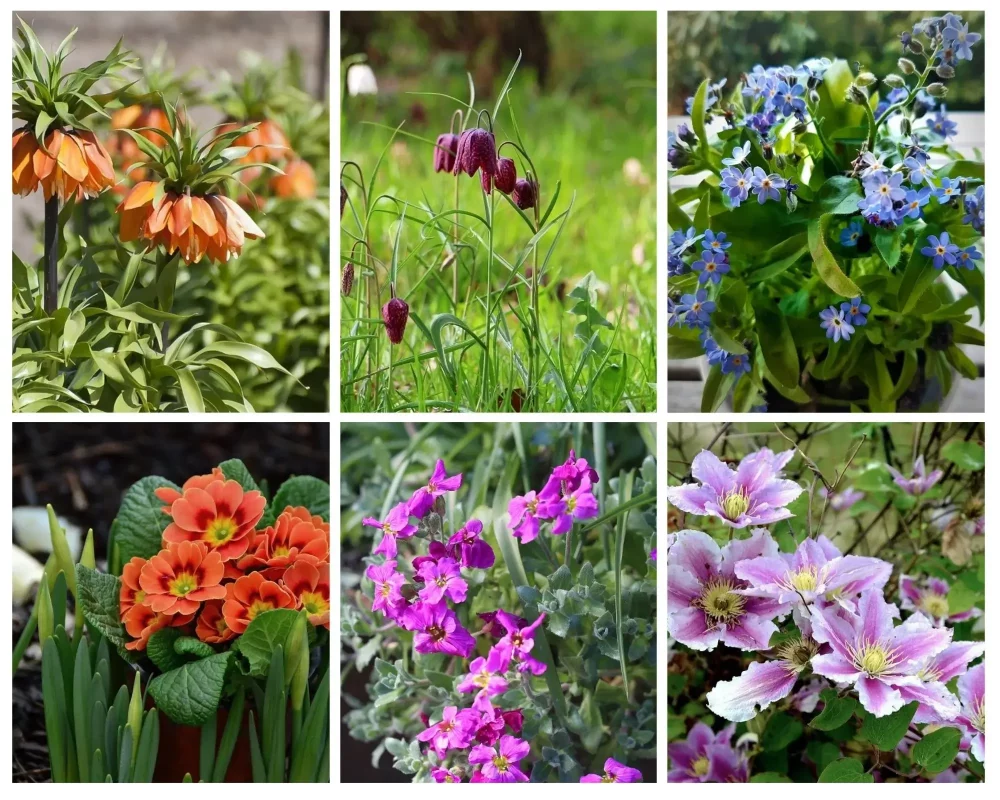
| Fritillaria imperialis (Crown imperial) | This large flower produces majestic bell-shaped flowers with a crown of green leaves. Grow them in well-drained soil and plenty of sun. |
| Fritillaria meleagris (Snake’s head) | Another member of the Fritillaria genus that stuns with its beauty. This perennial is best grown in free-draining soil in partial shade. |
| Forget-me-not | Forget-me-nots are simple biennial plants. They bring a natural, wild look to your garden and work great in combination with other spring flowers. |
| Primula | It’s an evergreen plant that’s easy to grow. Primulas come in different varieties, each with their preferences in terms of growing conditions. |
| Aubretia | Aubretia is a hardy evergreen perennial. It’s low-growing and forms beautiful carpets and waterfalls of colours. It works perfectly for wall crevices and rock gardens. |
| Clematis alpina and Clematis macropetala | These beautiful deciduous climbers are easy to grow, hardy, and require almost no pruning. |
Shrubs
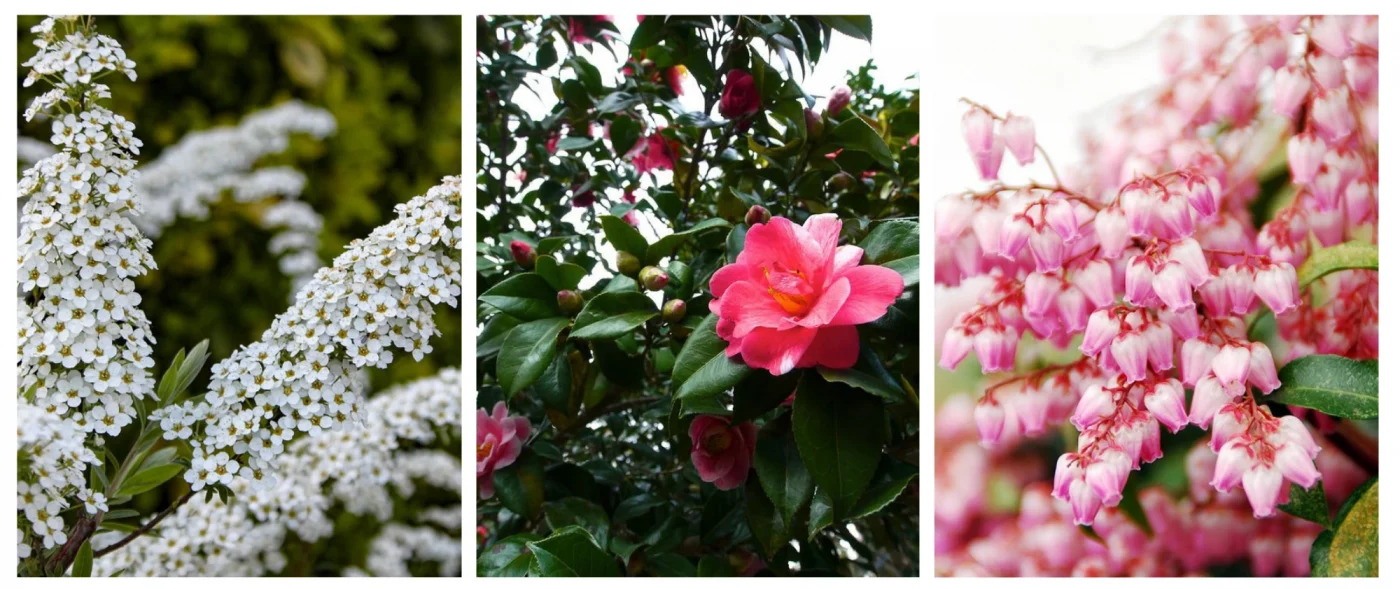
| Spiraea | A quick-growing deciduous shrub, Spiraea is easy to grow and has no particular pruning requirements. It can be used for hedges, ground cover, or rock gardens. |
| Camellia | Camellia will give you large, attractive flowers; just make sure you provide them with the appropriate conditions. For example, plant them in dappled or full shade in acid soil and water well in the summer. Camellias are perfect for containers. |
| Pieris | This evergreen shrub is covered in bright red-coloured foliage in the spring. Some varieties also produce white flowers. Apart from planting it in acid soil, it has no specific maintenance—plant in full sun or partial shade. |
Trees

| Crab apple | It’s a small tree with showy white, sweet-scented flowers. Grow crab apple trees in full sun with well-drained soil, although it’s tolerant to almost any soil. |
| Japanese apricot | It produces deep pink, highly scented flowers. They grow in full sun or partial shade and moist but well-drained soil. |
| Magnolia daphne | It’s a compact deciduous tree perfect for small gardens. It produces yellow, tulip-shaped flowers. It prefers sun or partial shade and moist, well-drained soil rich in humus. |
What gardening jobs can I do in April?
In terms of gardening jobs in April, UK gardeners can get plenty of work done. Here’s what you can do for your vegetables, flowers, and fruit.
? Vegetables
Seeing weeds grow strongly is a sign that the ground is warm enough for you to sow seeds outdoors. However, it also means it’s time to start dealing with said weeds. You can cover weedy areas with clear plastic sheets to suppress weed growth.
Protect new plants from slugs and snails by surrounding them with barriers of dry material (e.g. grit, sheep wool, or dry oats). Cover them with horticultural fleece or netting to protect brassicas from pigeons and pests. As for the soil, you can feed it with manure, garden compost, or organic fertiliser.
? Fruit
If frost is expected, you can cover small trees with fleece at night. In dry weather, water your trees and shrubs. If your newly-planted fruit trees produce blossoms, remove them to stimulate growth. Cover the area surrounding their base with mulch to keep it weed- and grass-free for better protection. Before mulching, you can also top-dress with compost.
? Flowers
Feed the soil with compost or well-rotted manure and apply mulch to retain moisture. Top-dress potted plants by replacing the top layer with new compost. For any spring existing bulbs in your garden, deadhead them before they prepare to seed. Place plant supports so that you’re ready for new plant growth.
Pest and disease control
Pest protection is one of the most important jobs in the garden in April. For example, as the soil starts to warm up, you may notice vine weevils. Their grubs eat plant roots, ultimately killing your plant. Thrips that are dormant during winter will also wake up at this time of the year and begin to lay eggs. April is also the perfect time for aphid infestations to begin.
To prevent or combat pest issues, use an organic spray such as Spray2Grow THRIPS Protection Spray 500 ml or Spray2grow SPIDERMITE Protection Spray 500 ml. They can be used on all organic and edible crops.
You can also opt for a multi-purpose spray like Plant Chemist 1L (RTU) Insect Control to control a wide range of insects. It can be applied to flowers, fruit, and vegetables outdoors and indoors.
Powdery mildew may also appear in late spring. Its spores can survive the winter and need warm and dry weather to activate. To protect against mildew or treat it, you can use an organic spray such as Spray2Grow Mildew Protection Spray 500 ml. It battles several different types of fungi.
What can I sow in April?
If you’re wondering what to plant in the vegetable garden in April or what flowers to sow in your ornamental garden, take a look at our suggestions below. Also, if you’re unsure how to approach indoor or outdoor germination, we’ve added some useful tips.
Indoors vs Outdoors
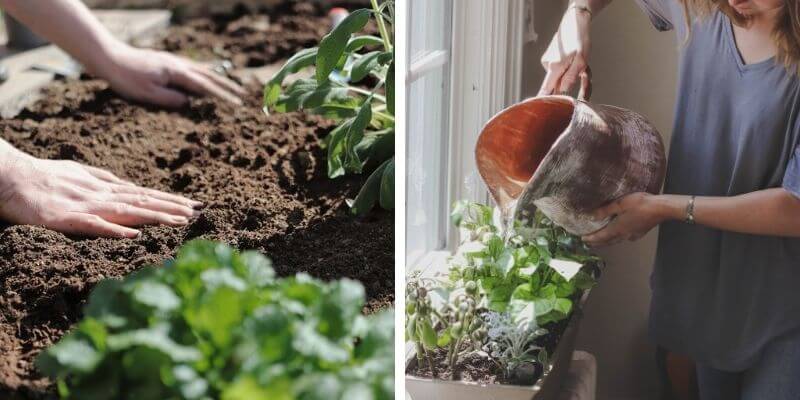
Sowing seed outdoors is safe for plants that don’t need protection from any potential late frosts. These include carrots, onions, leeks, radish, brassicas, leafy greens, and hardy herbs. You can plant their seeds directly outside, right after preparing your garden or plant beds.
To boost your young seedlings’ growth and secure all-important nutrients, you can apply organic fertilisers such as Biobizz Bio-Grow 1 L or Biobizz Fish-Mix 1 L.
For flowering plants, Biobizz Bio-Bloom 1 L will strengthen your crops and stimulate vigorous flower production. Another great way to improve the strength, colour, aroma, and size of your new plants is by using the Advanced Nutrients pH Perfect Grow 500 ml, Micro 1 L, or Bloom 1 L. It’s a three-part base system that will deliver valuable macro, secondary, and micronutrients, eliminating the risk of deficiencies.
Sowing seed indoors is suitable for tender crops such as sweetcorn, courgettes, tomatoes, pumpkins, and aubergines. You can plant seeds in convenient trays such as the ROOT!T Natural Rooting Sponges Tray and Eazy Plug Seedling Tray x 77. The grow cubes and sponges will ensure the right amount of water and air for your seedlings without any mess.
To provide perfect all-around conditions for germination, you can also plant your seeds in a propagator such as Pro 70 Propagator or EarlyGrow Large Propagator. These double-vented domed propagators will provide light, prevent condensation, and serve you for years to come. Finally, to help your seeds germinate without heating an entire room or greenhouse, an EarlyGrow Heated Windowsill Propagator will guarantee the perfect temperature of 16°C-19°C.
If you’re concerned about soil quality, overwatering, or poor air circulation, a great way to control growing conditions is by using fabric pots. They come in different sizes, such as Gronest Fabric Pot – 11 Litres, 15 Litres, and 25 Litres. Fabric pots offer superior drainage and facilitate air root pruning, thus preventing your plants from becoming root-bound. Some models like Garden HighPro Soft ProPot – Fabric Pot 15L (10 pack) and Garden HighPro BASIC ProPot 20 L (10 pack) even come with handles for easier moving.
Vegetables to Plant in April
- Aubergines, chillies, and tomatoes need a long growing season, so you can sow them in a heated propagator to accelerate germination (especially tomatoes).
- Courgettes, marrow, squashes, and cucumbers should also be planted indoors in individual pots.
- Carrots can be planted directly outdoors. Carrots can also be grown in pots or fabric containers, especially if you have hard or stony soil. Or you can opt for a shorter variety.
- Lettuce seeds can be sown directly outside. However, for extra protection from snails and slugs, you can also sow them in module trays and plant them out later.
- Spinach can also be sown directly outside at this time of the year. If it’s still cool outside, however, you can cover them with horticultural fleece.
- Microgreens (vegetable and herb seedlings) grow quickly and can be planted in a propagator tray placed on a window sill. They are a great way to add nutrients to your salads or sandwiches. Plant radish, kohlrabi, cabbage, or broccoli and you can harvest microgreens in a week or two.
Flowers to Plant in April
- Bedding plants such as cosmos or marigold make some of the best garden flowers for April. Keep in mind that they can be damaged by late frosts, so you should plant them in a propagator or mini greenhouse.
- Hardy annuals such as poppies and sunflowers are perfect garden flowers for April sowing outdoors, and so are wildflower mixes.
- Lagurus ovatus (Bunny tail grass) works well as an ornamental edging plant. It’s easy to care for and can be started in pots or trays indoors.
- Monarda (Bee Balm) is a perennial plant that’s attractive to bees and butterflies. Sow indoors and transplant to a sunny location with well-drained soil.
- Ipomoea lobata (Spanish flag) is an annual climber. Again, plant it undercover and wait for the last frosts to pass before moving the seedlings outside.
- Lily bulbs can be planted now if you didn’t do so in autumn. They do well in containers if you lack space in your garden. Place drainage material at the bottom of your pots.
Pro tip: Have you tried companion planting? It involves planting different vegetables and flowers together to repel insects, improve pollination, or increase yields. For example, tomato plants can be combined with Tagetes patula (French marigold) or basil to reduce whitefly and other pests. To aid pollination in your vegetable plot, plant borage or oregano.
Fruit to plant in April
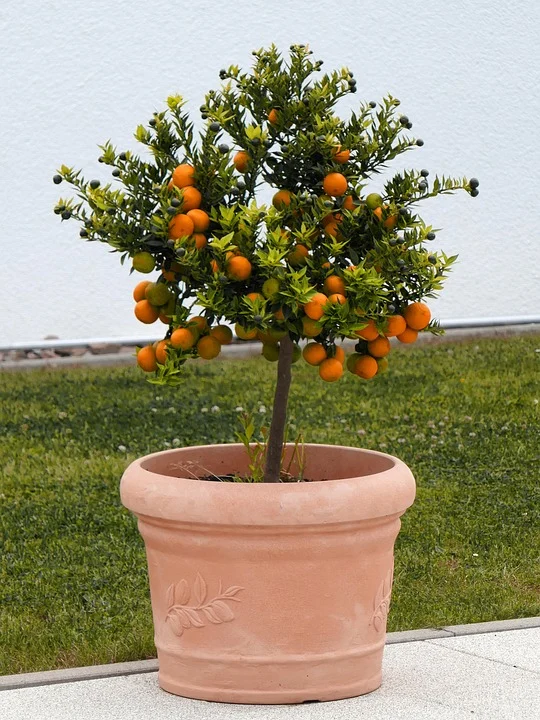
- Strawberry runners can be planted directly into the soil this month. If you’re short of space, you can grow them in hanging strawberry planters or even vertical fabric pots.
- Raspberry canes can also be planted at this time. Raspberries are easy to grow but prefer a sunny spot with moist but well-draining soil. Mulch around them to retain moisture.
- April is a good time to plant pot-grown fruit trees and bushes. These include currants, figs, citrus fruits, or any dwarf fruit tree. Pick a large enough pot or fabric container placed in a sunny spot.
Maintenance
Let us take a look at some additional gardening tips for April that UK gardeners can keep in mind this month:
Indoors
- In April, you can begin feeding your houseplants with liquid fertiliser. Do it once a week from now until autumn.
- Pot up houseplants that appear to be root-bound. For larger containers, top-dress them with fresh compost.
- Using a damp cloth, clean the leaves of houseplants. For cacti and succulents, use a soft brush.
- Now is a good time to purchase plug plants. Upon receipt, water them and let them acclimatise in a warm spot. Move them to larger pots so they can continue to develop stronger roots. Garden-ready plugs, which are larger than standard ones, can be planted out right away.
Outdoors
- Prepare beds by digging in a layer of compost or well-rotted manure (at least 5cm).
- Hoe any weeds as soon as you spot them, for example, between rows of vegetable seedlings. Annual weeds must be removed before they seed.
- If you spot tree suckers at the base of your fruit trees, remove them.
- Apri is also a good time to repair your lawn by sowing grass seed. Don’t forget to keep the soil moist to help it germinate. Apply a lawn weed killer if you’re struggling with weeds. Also, you’ll need to start cutting your lawn, gradually reducing blade height over time.
- Your climbing and rambling roses can be pruned and tied in.
- You can use the warm April days to clean your patio and paths with a pressure washer.
Greenhouse maintenance
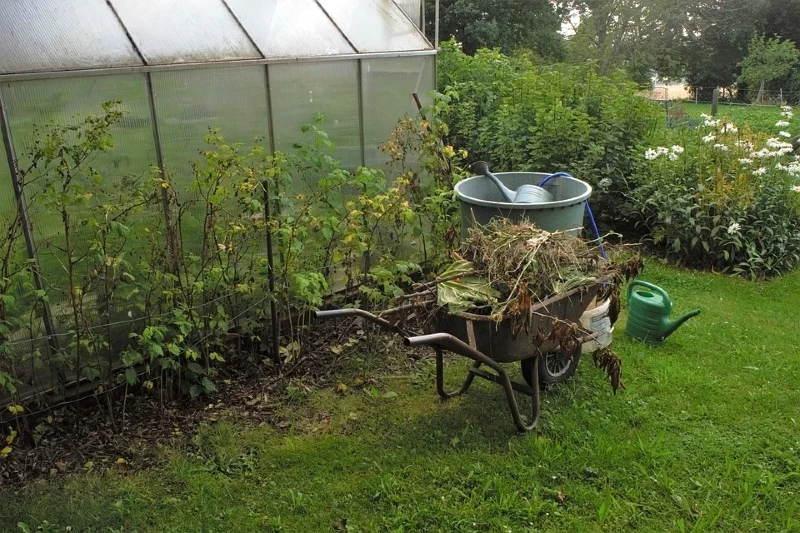
- To prepare your greenhouse for the new season, clean the glazing with hot soapy water and open the doors on sunny days.
- For any plants that you’ve grown in your greenhouse, it’s a good time to harden them off by gradually bringing them outdoors during the day.
- You can equip your garden with a fan such as Highlight Oscillating Wall Fan 406mm (16″) to improve ventilation and keep humidity down. It can be mounted on the wall to save space.
- If you have water butts installed, check your guttering and clean it if necessary.
We hope the ideas above will help you get the most out of the warm, sunny days this April. Put on your gardening gloves and prepare your garden just in time for summer!

